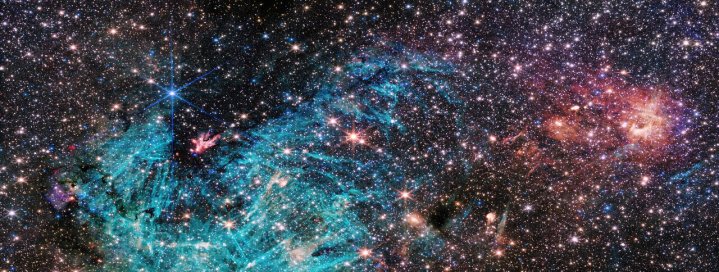A new image from the James Webb Space Telescope shows the heart of our galaxy, in a region close to the supermassive black hole at the center of the Milky Way, Sagittarius A*. The image shows a star-forming region where filaments of dust and gas are clumping together to give birth to new baby stars.
The image was captured using Webb’s NIRCam instrument, a camera that looks in the near-infrared portion of the electromagnetic spectrum with shorter wavelengths shown in blue and cyan and longer wavelengths shown in yellow and red.

This region is called Sagittarius C, and is located around 300 light-years away from the supermassive black hole Sagittarius A*. For reference, Earth is located much further away from the galactic center, at a distance of around 26,000 light years from Sagittarius A*.
There are thought to be as many as 500,000 stars in the Sagittarius C region, including many young protostars, some of which will go on to become main-sequence stars like our sun. As stars form, they give off powerful stellar winds which blow away nearby material and prevent more stars from forming very close to them.
These outflows are illuminated in the infrared wavelength, and the cyan-colored patches in the image are created by ionized gas. The young stars give off a great deal of energy, which ionizes the hydrogen gas around them and makes them glow in the infrared.
However, there are actually even more stars in this area than can be seen in the image. The pockets of darkness scattered throughout the image aren’t blank but are dense clouds that are dark in the infrared, including a large dense area in the heart of the region.
There are still some surprises to be found in the image too, with some features that scientists need to study in more depth. “Researchers say they have only begun to dig into the wealth of unprecedented high-resolution data that Webb has provided on this region, and many features bear detailed study,” Webb scientists write. “This includes the rose-colored clouds on the right side of the image, which have never been seen in such detail.”



